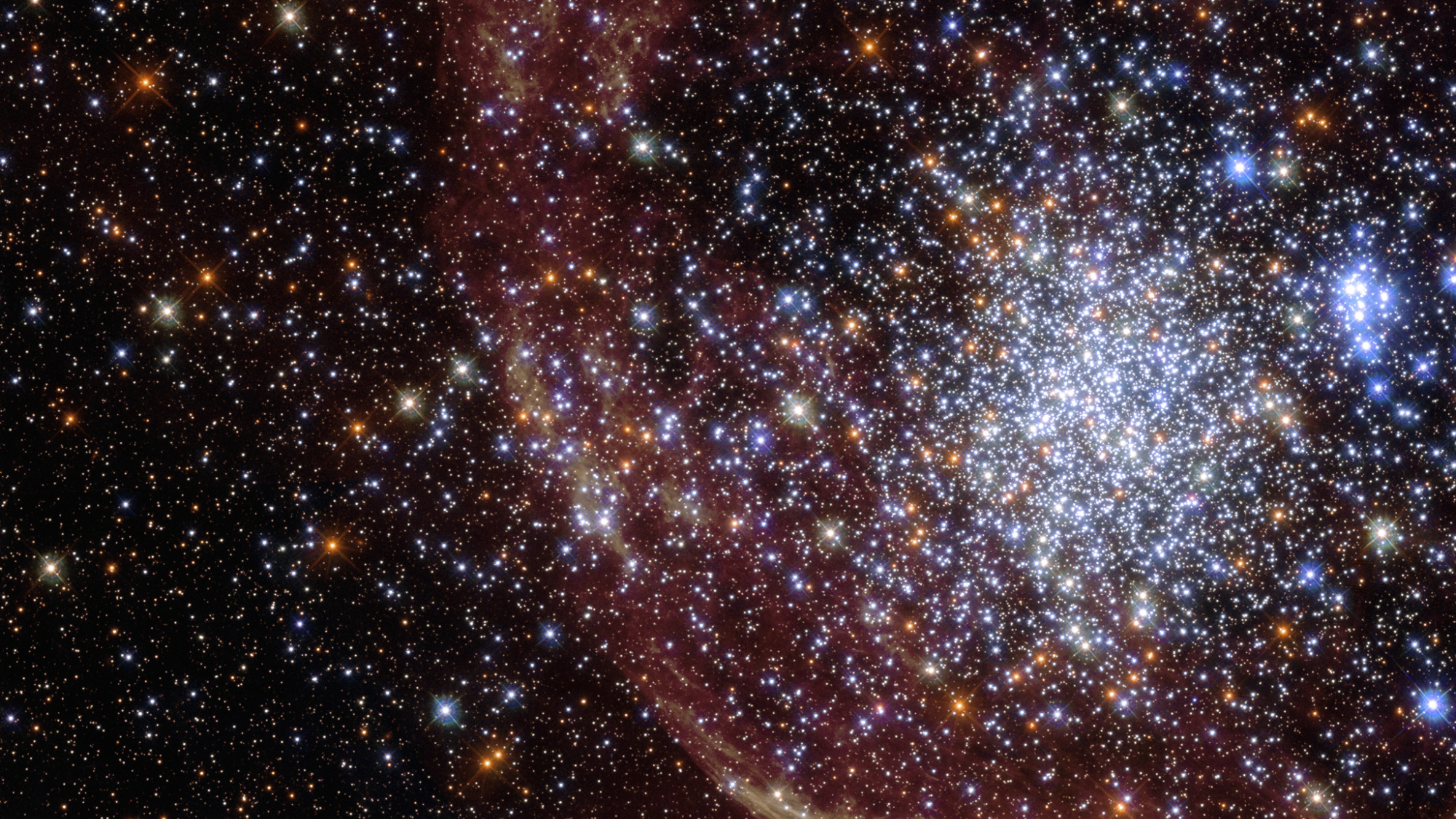The Hubble Space Telescope has captured two dazzling views from a single star-studded place.
When the first stars formed in the globular cluster NGC 1850 about 100 million years ago, they expelled gas and dust into space. But their collective gravity was massive. And so, the cluster held on tight to the cast-off stuff and drew in more stellar building-blocks from its surroundings, too. This led to a second generation of stars.
NASA officials shared this story (opens in new tab) to accompany two images of the cluster from the Hubble Space Telescope. Each image is a unique spectacle, and uses different colors to highlight various pieces of invisible information.
Related: The best Hubble Space Telescope images of all time!
Near-infrared observations (blue) and near-ultraviolet data (red) allow astrophysicists and enthusiasts to view wispy regions — which NASA calls “nebulosities” — that otherwise couldn’t be seen with the human eye. Astrophysicists think these are made of diffuse gas and dust from supernova blasts.
Different stars shine in both pictures, too. The younger ones include bright blue stars, visible on the right side of the red-tinted image. They “burn hotter and die younger,” according to NASA, in comparison to the red stars visible in the same image.
The space agency said about 200 red giants are present. They glow red as their outer layers expand and cool, since they’ve aged enough to run out of hydrogen in their centers and are now fusing hydrogen farther from their cores, NASA said.

According to NASA, in 2021, scientists discovered a black hole in this globular cluster.
To view this scene, Hubble peered into the constellation Dorado. It rendered a place 160,000 light-years away, located in a small satellite galaxy near the Milky Way known as the Large Magellanic Cloud. It appears in the Southern Hemisphere, and looks like an odd smudge in the night sky.
Follow Doris Elin Urrutia on Twitter @salazar_elin. Follow us on Twitter @Spacedotcom or on Facebook.

